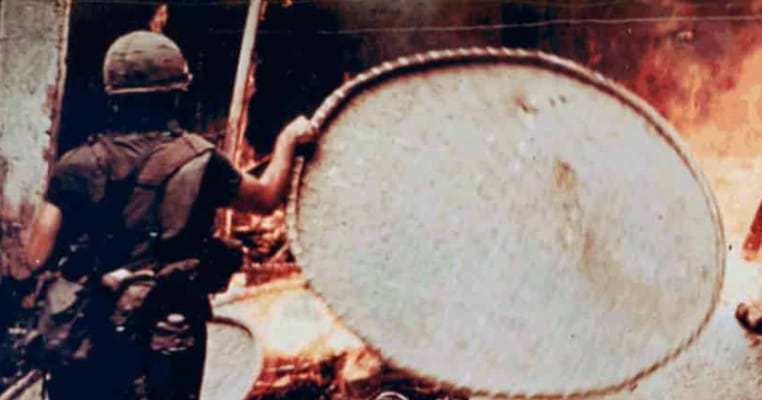American’s don’t want to believe that troops representing the United States have committed war crimes in the past. It is a harsh truth to face. But it is the truth. Arguing that revelations of American complicity in war crimes are revisionism is correct. The revelations of documented war crimes committed by American soldiers, sailors, and airmen are revising a false version of history and placing the truth on the public record. Not every person to wear the uniform of the United States has been the idealized version of the All-American boy, whether volunteer or draftee.
Some war crimes have been racially motivated. Some have been based on vengeance. Some have been sexual, assaults and rapes. Some have been ordered by superior officers and others have been noted by superior officers and covered up by prevailing policy. It is safe to say that many went undetected. The respected historian Stephen Ambrose noted that after interviewing over one thousand combat veterans of the Second World War only one admitted to having shot a surrendered prisoner of war. But he observed that “Perhaps as many as one-third of the veterans…” reported having seen another GI shoot unarmed German soldiers who had their hands up in surrender.

Here are ten documented examples of war crimes committed by Americans in history.

The Biscari Massacre in Sicily 1943 Part 1
The American and British armies invaded Sicily in the summer of 1943, with the American troops commanded by George S. Patton and the British led by Bernard Montgomery. General Omar Bradley’s II Corps included the 45th Infantry Division, a unit which had not yet seen combat. Part of this division was the 180th Infantry Regiment. It was assigned to capture the Biscari airfield, defended by both Italian and German troops. The regiment encountered strong resistance from the Germans and Italians, and its leadership was so poor that the relief of its commander was recommended to Bradley.
On July 14 the regiment was engaged in fighting around the nearby Santo Pietro airfield and by mid-morning had taken 48 prisoners, three of which were Germans, the rest Italians. Sergeant Horace T. West was ordered to escort the prisoners to the rear to be held for questioning in an inconspicuous location. The prisoners were ordered to remove their shoes and shirts, a common precaution to discourage attempts to escape. West was accompanied by other American soldiers and they marched the prisoners about a mile behind the lines.
West then removed eight or nine prisoners and ordered them sent to the regimental command post for questioning. He then borrowed a Thompson machine gun from First Sergeant Haskell Brown and a second clip containing thirty rounds of ammunition, telling Brown, who asked why West wanted the Thompson, he was going to “…kill the sons of bitches.” West instructed the other men guarding the prisoners to turn their backs if they didn’t want to watch. West then shot all of the remaining Italian and German prisoners.
After all of the prisoners were on the ground West replaced the empty clip in the Thompson with the spare he had requested and walked among them, shooting any who showed any signs of life through the heart. First Sergeant Brown later testified that West was calm, moved deliberately and methodically through the wounded prisoners, and placed each shot carefully after he had mowed them down with the first burst from the Thompson. The bodies were later observed by Lt. Colonel William King, who sent word of the incident up the chain of command to Bradley, who reported it to Patton.
Patton’s first response was to suggest that the report was an exaggeration and to ignore it, which Bradley refused to do. Patton wrote of the incident in his diary, reporting that he told Bradley to certify that the prisoners had been snipers, “…or had attempted to escape or something…anyhow they are dead, so nothing can be done about it.” Under pressure from Bradley, Patton agreed to have the matter investigated. When the division’s Inspector General reported that the prisoners were all following the orders of their guards and had done nothing to provoke them, the Army charged West with murder.
West was tried on September 2, 1943, and entered a plea of not guilty, claiming essentially that he was suffering from combat fatigue and was thus temporarily insane. Testimony from eyewitnesses belied this claim. He was convicted, stripped of his rank, and sentenced to life imprisonment. Less than two months later the remainder of his sentence was remitted and he was restored to active duty. He served for the remainder of the war and was honorably discharged from the Army. He returned to his native Oklahoma where he lived the rest of his life, dying there in 1974.

